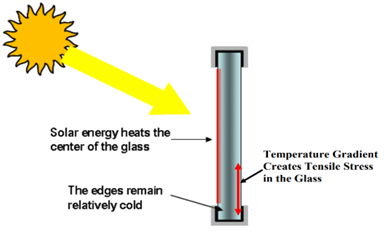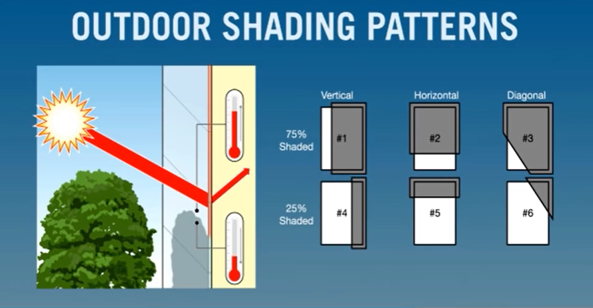The performance of the exterior façade depends upon the evaluation of the components to meet or exceed the project requirements. It is the responsibility of glazing contractors to understand how these components work and verify that they are adequate for the application.
Although the use of heat strengthened glass has become more dominant on commercial projects, annealed glass use is still common in many architectural applications. One reason for the increased use of heat-treated glass is its ability to resist thermal stress, thus reducing thermal stress breakage. But with larger glass sizes, the use of tinted heat absorbing substrates and the integration of exterior shading components reminds us of the need to review annealed glass applications for thermal stress.

Thermal stress breakage occurs as a result of uneven heating in annealed glass. When a part of the glass expands with exposure to heat and another part of the glass resists expansion because it’s not being heated, tensile stresses build up. When the stress is greater than the strength of the glass, a thermal break will occur. Factors that contribute to potential thermal stress are;
- Glass Substrates: Tinted glass absorbs solar radiation and heats up. This absorption makes tinted glasses more susceptible than clear glasses to break due to thermal stress.
- Glass Coatings: Reflective and low-e coatings both reflect and absorb solar radiation, and depending on their surface location in an IG, can increase the amount of solar radiation absorbed by the outer or inner pane of glass, changing the risk of thermal stress.
- Framing Systems: Look for a framing system that has a low heat transfer or capacity as one more way to minimize the chance of a break.

- Exterior Shading Patterns: Shading patterns can be one of the most critical elements, since they vary seasonally. Ideally, it’s best to minimize locations within your project where less than 50% of the glass panel is covered with shade.
- Interior Shading Devices: Just as outdoor shading patterns can impact the thermal load put on glass, indoor shading devices, such as blinds or drapes, can also increase the temperature of the glass. This occurs when the blind or shade reflects the solar radiation back through the glass, reducing the convection and conduction of the heat away from the glass.
All of these factors can increase the likelihood that an annealed glass lite will experience a thermal stress break, and why it is recommended to work with your glass fabricator to get a thermal stress analysis done early in the design process. Many fabricators have developed thermal stress analysis tools that can help you reduce the risk that the annealed glass units will experience a thermal stress break.
